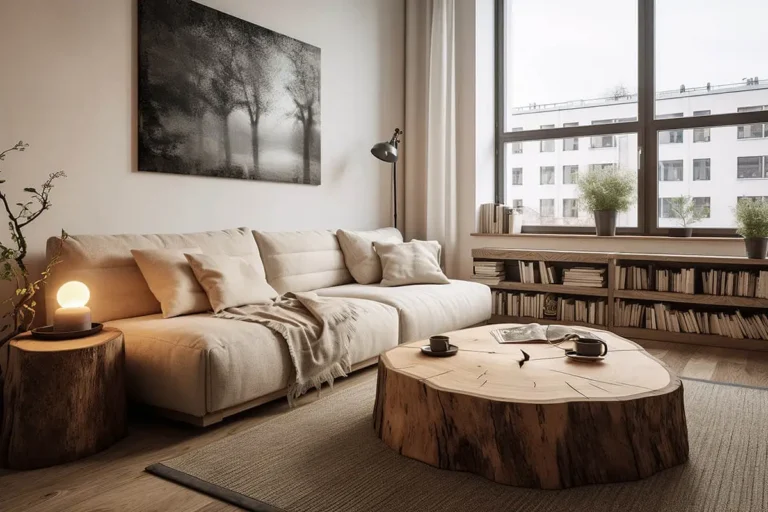5 Ways How To Style a Modern Home To Look and Feel Like a Classic Farmhouse
How to Style a Modern Home to Look and Feel Like a Classic Farmhouse
The timeless appeal of farmhouse design lies in its perfect balance of comfort, functionality, and rustic charm. While modern homes often feature sleek lines and minimalist aesthetics, transforming your contemporary space into a cozy farmhouse retreat is entirely achievable with the right design choices. The key is incorporating authentic materials, vintage-inspired elements, and a neutral color palette that evokes the warmth and simplicity of rural living.
Creating a successful farmhouse transformation requires understanding that this style celebrates imperfection and lived-in comfort rather than pristine polish. The goal is to achieve a space that feels collected over time, where every piece tells a story and contributes to an overall sense of home. By focusing on natural textures, weathered finishes, and practical beauty, you can bridge the gap between modern convenience and classic farmhouse charm.
1) Embrace Natural Materials and Textures
The foundation of authentic farmhouse style begins with incorporating raw, natural materials throughout your space. Reclaimed wood is perhaps the most essential element, whether used for accent walls, ceiling beams, or furniture pieces that showcase the grain and character of aged timber. Stone and brick elements, such as exposed fireplaces or kitchen backsplashes, add the substantial, earthy quality that defines traditional farmhouse interiors. These materials bring warmth and authenticity that synthetic alternatives simply cannot replicate.
Layering different textures creates the tactile richness that makes farmhouse spaces feel so inviting. Consider adding jute rugs, linen curtains, wool throws, and woven baskets to introduce organic textures that complement your natural materials. The interplay between smooth and rough, soft and hard surfaces creates visual interest while maintaining the unpretentious comfort that characterizes farmhouse design.
2) Choose a Timeless Neutral Color Palette
Classic farmhouse color schemes revolve around soft, muted tones that reflect the natural world and create a sense of tranquility. Whites, creams, and warm grays serve as the perfect backdrop, allowing architectural details and natural materials to take center stage. These neutral foundations also provide flexibility for seasonal decorating and ensure your space feels fresh and airy rather than cluttered or overwhelming.
Accent colors should be drawn from nature’s palette, including sage greens, dusty blues, and warm browns that complement rather than compete with your neutral base. Black accents, particularly in hardware and lighting fixtures, add definition and prevent the space from feeling washed out. The key is maintaining restraint and allowing each color to serve a purpose rather than creating visual chaos.
3) Incorporate Vintage and Antique Pieces
Authentic farmhouse style celebrates the beauty of aged and weathered items that carry history and character. Hunt for vintage furniture pieces like weathered farm tables, antique cabinets, or church pews that can serve as focal points in your rooms. These pieces don’t need to match perfectly; in fact, the eclectic mix of different eras and styles creates the collected-over-time aesthetic that defines true farmhouse charm. Look for items with original paint, natural patina, or interesting architectural details that add personality to your space.
Antique accessories and decor items help layer in authenticity without overwhelming your budget or space. Vintage mason jars, old milk jugs, weathered signs, and antique tools can be repurposed as decorative elements that tell a story. Flea markets, estate sales, and antique shops are treasure troves for finding unique pieces that bring genuine farmhouse character to modern homes.
4) Focus on Functional Beauty in Every Room
Farmhouse design principles prioritize items that are both beautiful and useful, reflecting the practical nature of rural living. In the kitchen, open shelving displays everyday dishes and glassware, while vintage-inspired appliances and farmhouse sinks combine modern convenience with classic style. Large wooden cutting boards, ceramic crocks, and copper pots become decorative elements when they’re not in use. This approach ensures that every item in your space serves a purpose while contributing to the overall aesthetic.
Storage solutions should be as attractive as they are functional, with woven baskets, vintage trunks, and reclaimed wood shelving providing organization while adding to the farmhouse ambiance. Choose furniture pieces that offer hidden storage, such as benches with lift-up seats or coffee tables with built-in compartments, to maintain the clean, uncluttered look that makes farmhouse spaces feel so peaceful and welcoming.
5) Create Cozy Gathering Spaces
The heart of farmhouse living centers around creating inviting spaces where family and friends naturally want to gather. Arrange furniture to encourage conversation, with comfortable seating grouped around focal points like fireplaces or large windows that offer views of the outdoors. Large farm tables serve as the perfect centerpiece for dining rooms, while cozy reading nooks with vintage chairs and soft lighting create intimate spaces for relaxation. The goal is to design rooms that feel lived-in and welcoming rather than formal or intimidating.
Lighting plays a crucial role in establishing the warm, inviting atmosphere that defines farmhouse interiors. Layer different light sources, including pendant lights with metal or glass shades, table lamps with fabric shades, and candles that add a soft, flickering glow. Natural light should be maximized whenever possible, with simple window treatments that allow sunshine to flood your spaces while maintaining privacy when needed.







